"Belgian Royal Question" - the Abdication Crisis of King Leopold III of the Belgians
Marengo
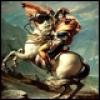
Marengo is a history student from Amsterdam with a special interest in Portuguese, Napoleonic and Dutch royals.
View all articles by MarengoLilian
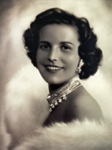 Leopold was only 37 years old and had already been a widower for three years when in 1938 he became attracted to the elegant Lilian Baels, who made a lasting impression on him. In the war days of 1940 Lilian moved with her family to France, but in January 1941 Leopold's mother, Queen Elisabeth, sent her chauffeur to Biarritz to fetch Lilian. Queen Elisabeth thought that the 24-year-old Lilian would be the perfect medicine to alleviate her son's despondency. It was her task to "distract" the King. Soon Queen Elisabeth discovered "that the remedy was very mild and that the patient was not disposed to finish the treatment." Leopold was dazzled by Lilian's beauty and was very much in love with her. The affair caused some problems. First of all, Lilian wasn't happy with the status of mistress; only marriage could bring her security. Cardinal van Roey also tried to persuade the King to make Lilian his lawful wife, as he had religious and moral problems with the affair. So in 1941 Leopold asked Lilian to marry him. Although Lilian had been pushing to get Leopold to propose to her, she did not accept the proposal immediately. "But Kings marry Princesses," she replied. Queen Elisabeth had to persuade her to accept the offer: "You can't do that to my son. He needs a wife, you have to accept," which she did. Henri Baels, Lilian's father, realized that this marriage would cause an uproar and only gave his blessing if Queen Elisabeth would attend the ceremony and if Cardinal van Roey would officiate.
Leopold was only 37 years old and had already been a widower for three years when in 1938 he became attracted to the elegant Lilian Baels, who made a lasting impression on him. In the war days of 1940 Lilian moved with her family to France, but in January 1941 Leopold's mother, Queen Elisabeth, sent her chauffeur to Biarritz to fetch Lilian. Queen Elisabeth thought that the 24-year-old Lilian would be the perfect medicine to alleviate her son's despondency. It was her task to "distract" the King. Soon Queen Elisabeth discovered "that the remedy was very mild and that the patient was not disposed to finish the treatment." Leopold was dazzled by Lilian's beauty and was very much in love with her. The affair caused some problems. First of all, Lilian wasn't happy with the status of mistress; only marriage could bring her security. Cardinal van Roey also tried to persuade the King to make Lilian his lawful wife, as he had religious and moral problems with the affair. So in 1941 Leopold asked Lilian to marry him. Although Lilian had been pushing to get Leopold to propose to her, she did not accept the proposal immediately. "But Kings marry Princesses," she replied. Queen Elisabeth had to persuade her to accept the offer: "You can't do that to my son. He needs a wife, you have to accept," which she did. Henri Baels, Lilian's father, realized that this marriage would cause an uproar and only gave his blessing if Queen Elisabeth would attend the ceremony and if Cardinal van Roey would officiate.
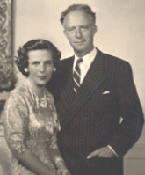 The couple married on 11 September, and Leopold's children quickly became fond of their stepmother and called her "maman." Within three months Lilian became pregnant, and as this would not stay a secret for long, Leopold III asked Cardinal van Roey to write a letter that was to be read from the pulpit at Sunday mass in Catholic churches throughout the country. The Belgians were shocked. The image of their lonely heroic King, who was struck with sorrow and humiliation and who thought only about the welfare of his people, was shattered. Suddenly the King was a selfish man who thought only of his own happiness. The second image of Leopold as the grieving widower of the immensely popular Queen Astrid fell apart too. The King's choice became the subject of heavy criticism: how could the King marry now? Hadn't he said that he would share the fate of the Belgian prisoners of war? Many Walloon soldiers were still in captivity in Germany and unable to see their wives, so how could the King remarry if he really meant what he said about wanting to share their fate? And how could he marry a commoner, a Flemish commoner? Some members of the upper class joked that the King would have to include herring in his coat of arms now that he had married the granddaughter of a fish merchant. Lilian was immediately branded a schemer and an adventuress. Leopold was mocked by the people as "the son-in-law of Mr. Baels" (Lilian's father was an unpopular Flemish politician who fled the country during the war to ensure his personal safety and was fired as a result). But their anger was directed chiefly at Lilian, who was referred to as "Lady Codfish" and "the fishmonger's daughter." Because of public indignation against the marriage, Leopold did not dare bestow the title of Queen upon his new wife. She was granted only the title of Princesse de Réthy, after a domain owned by the royal family. Her children, though entitled to call themselves princes and princesses of Belgium, were also deprived of any rights to the throne. Another problem was that the marriage was against the constitution since a royal marriage had to be approved by the government first. The reputation of the King now started to fade in Belgium, where the people came to view him with more suspicion and to wonder if his conduct was really as flawless as they thought. And what about the so-called politics of Laeken?
The couple married on 11 September, and Leopold's children quickly became fond of their stepmother and called her "maman." Within three months Lilian became pregnant, and as this would not stay a secret for long, Leopold III asked Cardinal van Roey to write a letter that was to be read from the pulpit at Sunday mass in Catholic churches throughout the country. The Belgians were shocked. The image of their lonely heroic King, who was struck with sorrow and humiliation and who thought only about the welfare of his people, was shattered. Suddenly the King was a selfish man who thought only of his own happiness. The second image of Leopold as the grieving widower of the immensely popular Queen Astrid fell apart too. The King's choice became the subject of heavy criticism: how could the King marry now? Hadn't he said that he would share the fate of the Belgian prisoners of war? Many Walloon soldiers were still in captivity in Germany and unable to see their wives, so how could the King remarry if he really meant what he said about wanting to share their fate? And how could he marry a commoner, a Flemish commoner? Some members of the upper class joked that the King would have to include herring in his coat of arms now that he had married the granddaughter of a fish merchant. Lilian was immediately branded a schemer and an adventuress. Leopold was mocked by the people as "the son-in-law of Mr. Baels" (Lilian's father was an unpopular Flemish politician who fled the country during the war to ensure his personal safety and was fired as a result). But their anger was directed chiefly at Lilian, who was referred to as "Lady Codfish" and "the fishmonger's daughter." Because of public indignation against the marriage, Leopold did not dare bestow the title of Queen upon his new wife. She was granted only the title of Princesse de Réthy, after a domain owned by the royal family. Her children, though entitled to call themselves princes and princesses of Belgium, were also deprived of any rights to the throne. Another problem was that the marriage was against the constitution since a royal marriage had to be approved by the government first. The reputation of the King now started to fade in Belgium, where the people came to view him with more suspicion and to wonder if his conduct was really as flawless as they thought. And what about the so-called politics of Laeken?
Leopold's political behavior was open to interpretation to say the least. Now he had broken completely with his government, he felt less and less obliged to follow the same path as his ministers in London; instead, he tried to do things the way he thought would be best for his country. One of his actions that would be considered very dubious was his meeting with Adolf Hitler at Berchtesgaden in November 1940, arranged by Leopold's sister, Crown Princess Marie-José of Italy. What the two spoke about was kept secret for a long time and would be a source of all sorts of rumours which would be difficult to dispel. Today, thanks to notes made by the interpreter, Paul Schmidt, we know that during the meeting Leopold first tried to obtain a guarantee of Belgium´s independence but failed. And he failed not least because he was unwilling to make concessions to Hitler. Still he tried to salvage something from the meeting: he tried to soften the German attitude to Belgium as much as he could, arrange food for the people, secure the release of the Belgian soldiers who had been taken prisoner, and ensure that the Belgians would be ruled by a Belgian, not by a German. Eventually he came to realise that none of his requests to alleviate the effects of the war on Belgium would be accepted by Hitler. As a result, he broke down and lost all interest in further negotiation. Even so, this meeting would create much doubt about the King, with many people assuming that he had used it as an opporunity to try to become King-Dictator of the Benelux countries. While Leopold tried to stay on cordial terms with the Germans, he certainly did not befriend them. He was however convinced that the Germans would win the war, or at least that there would be some treaty between Germany and the allies that would keep Belgium under German influence. This explains why he tried not to offend the Germans too much and why he tried to get a good deal from them for his people.
After the failed meeting with Hitler, Leopold refrained from other political initiatives. He never changed this attitude; when the country hoped that the King would speak out against the forced labour of Belgians in Germany, the King remained silent and waited. It is curious that Leopold is the only one of the Western monarchs ruling in 1940 who became unpopular during the war. The only other monarch who was in a comparable situation was King Christian IX of Denmark, who became a national hero by his silent resistance to the Germans. Queen Wilhelmina of The Netherlands and King Haakon of Norway both went to London, where they represented their country with the allies. Leopold's actions differed from those of his counterparts mostly because he never showed any sign of resistance. In the minds of much of the Belgian population, Leopold III was actually amusing himself at Laeken with his new wife and ignoring the welfare of his country. After the marriage of Leopold and Lilian it was popular to make all kinds of jokes about them. The following anecdote pretty much sums up the popular opinion: When a passenger on a tram in Brussels asked the driver to stop at the Leopold II Avenue, another passenger remarked: "note that you are saying Leopold II, because Leopold III is too busy elsewhere," which led to much laughter and acclaim in the tram.
After the War
In January 1944, when it was fairly obvious that the Allies would win the war, Leopold wrote his political testament, which made clear what he wished for. He requested that the demands from the Flemish Movement had to be accepted as long as they did not harm the Belgian state. In Leopold's words: "The Flemish have been the victim of a selfish ruling class for too long." He also wrote that the punishment for collaboration had to be limited to those who were truly guilty of major offences, something which did not help his image among those who suspected that he had been a collaborator himself. He also demanded open apologies from his ministers who had turned against him after the 18 days of war, and he insisted that they had to make a "solemn and complete" retraction of their accusations against the King. If they refused to accept, they would not be allowed to attend any public fuctions. This last point was not accepted by Pierlot and Spaak in London.
Shortly before the liberation of Belgium by the Allies in September 1944, the Germans deported Leopold, Lilian, and the King's four children (his three children by Queen Astrid and his son by Lilian) to Germany and eventually to Austria. In the absence of the King, the government installed Leopold's younger brother, Prince Charles, as regent. The politics of the country were immediately dominated by "The Royal Question": should Leopold return as King of the Belgians or not? The Communists, Liberals, and Socialists were against him, while the Catholics were defending their King. In the country the division was roughly that Wallonia and the Brussels district wanted the King to abdicate while the Flemish areas supported him. The Walloons probably had more hard feelings as they were more severely afflicted by the war than the Flemish, who were treated better by the Germans. The Walloons thus were less forgiving towards people who had collaborated with the Germans (of which Leopold was accused by some). However, there were divisions within these areas, and even families were split: fathers disagreed with their children, and brothers disagreed with brothers. In April 1945 the King was finally liberated near Salzburg by the Americans, and the matter could not be postponed any longer. Ministers still hoped that Leopold would withdraw his demands for a public apology from them and return to Belgium, while the majority in Parliament wanted him to abdicate. The new Prime Minister, Achille van Acker, decided that it would be best if Leopold and his family stayed in Austria until the situation became clearer. In the meantime, Prince Charles continued to act as regent; with his pragmatic behavior he successfully pushed the reorganisation of Belgium after World War II (women got the right to vote, a social welfare system was introduced, and the building sector was given government help). Spaak, who was the only member of the War Cabinet returning to the new government, went to meet his old adversary in Austria. The talks sadly failed when Leopold did not agree to any forum of reconciliation with the political leaders unless they openly apologised for their comments in 1940. Some suggest that the real reason for Leopold's refusal was that his wife did not accept the arrangement. There are indications that Spaak wanted to reduce the princely title of Lilian to that of "a countess at best" while her son Prince Alexander would be demoted to the status of a baron. The family awaited better times in Switzerland, where they settled in Pregny.
According to some historians, Leopold's delay in returning to Belgium cost him his throne. Sir Hughe Knatchbull-Hugessen, the British ambassador in Brussels, wrote at the time that if Leopold "had returned to Belgium on the morrow of his liberation when the whole country was in a festive mood, he might well have been acclaimed by the crowds." Instead, the delay allowed opponents of the King to open a public debate about his wartime behaviour. When, in late June, Leopold announced that he was going to return to Brussels without Lilian, he was no longer allowed to do so. Over a period of less than two months, Leopold rather than Lilian had become the problem for the Belgian politicians. The new government was composed of a coalition between the Socialist and Liberal parties; when the Christian parties tried to settle the matter and proposed a referendum about Leopold's return, their Socialist colleagues refused and the Christian Democrats withdrew their support from the government. Another government fell when the topic of Leopold's return kept dominating the political debate in Belgium. The elections of June 1949 saw a victory for the Christian parties in Parliament, with an absolute majority in the Senate and only one vote short of an absolute majority in Parliament. The new Prime Minister, Gaston Eyskens, was strong enough to organise the referendum his party had supported for some years.
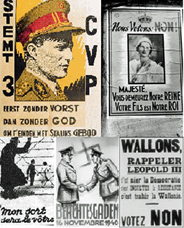 On 12 March 1950 the Belgians went to vote. The atmosphere was uneasy and even threatening. Even Queen Elisabeth was not spared from the heated debate; Time Magazine reports: "Near the royal palace, septuagenarian Queen Mother Elisabeth approached a voting booth. For a moment she fumbled for her glasses in her handbag. Housemaid Juliette Deemes shouted: 'Let Leopold come back and get a good kick in the backside!' From indignant bystanders rose counter cries of 'Vive la Reine!'." The result showed the division between Flanders and Wallonia: 2,933,382 voted in favour of the return of their King (57.68%) while 2,151,881 voted against (42.32%); in Flanders over 70% voted in favour of the King's return while in Wallonia nearly 60% voted against. Parliament held another vote on the return of the King, and the results mirrored the votes of the majority of the Belgians. Immediately after the results of the referendum had been published, some Belgian politicians went to Switzerland and tried to persuade the King to abdicate. During these meetings Lilian would freely speak about Spaak and other politicians. While she was around, Leopold did not want to hear of abdication; once she left to go to bed, the politicians were able to reason with the King, but the next morning he would change his mind again. Even according to the most loyal Leopoldists, Lilian overstepped her boundaries and almost acted as if she was a Queen. She even went so far as to offer some people positions at court as soon as Leopold returned to Belgium as King. She urged her husband to return to Belgium as soon as possible, which he only reluctantly did.
On 12 March 1950 the Belgians went to vote. The atmosphere was uneasy and even threatening. Even Queen Elisabeth was not spared from the heated debate; Time Magazine reports: "Near the royal palace, septuagenarian Queen Mother Elisabeth approached a voting booth. For a moment she fumbled for her glasses in her handbag. Housemaid Juliette Deemes shouted: 'Let Leopold come back and get a good kick in the backside!' From indignant bystanders rose counter cries of 'Vive la Reine!'." The result showed the division between Flanders and Wallonia: 2,933,382 voted in favour of the return of their King (57.68%) while 2,151,881 voted against (42.32%); in Flanders over 70% voted in favour of the King's return while in Wallonia nearly 60% voted against. Parliament held another vote on the return of the King, and the results mirrored the votes of the majority of the Belgians. Immediately after the results of the referendum had been published, some Belgian politicians went to Switzerland and tried to persuade the King to abdicate. During these meetings Lilian would freely speak about Spaak and other politicians. While she was around, Leopold did not want to hear of abdication; once she left to go to bed, the politicians were able to reason with the King, but the next morning he would change his mind again. Even according to the most loyal Leopoldists, Lilian overstepped her boundaries and almost acted as if she was a Queen. She even went so far as to offer some people positions at court as soon as Leopold returned to Belgium as King. She urged her husband to return to Belgium as soon as possible, which he only reluctantly did.
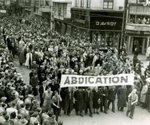 On 22 July 1950 the King finally set foot on Belgian soil again. However, it would not be the warm welcome that he had hoped for; his plane arrived early in the morning so that few spectators would be around, and he was hastily driven to Laeken Castle. The roads were guarded by 5,500 policemen to protect him and his family if needed. In the afternoon the King made a radio speech, in which he attacked his old enemy Spaak. Spaak did not take long to reply. "I am with Danton, against Louis XV," he replied a few hours later. During the following days, Belgium seemed to be heading towards a civil war. In Wallonia and in the harbours of Antwerp, workers went on strike to protest against the King's return. The protests quickly became massive, and they completely stopped public life in Belgium and turned into riots. On 30 July, three protesters were shot dead by the police in Grâce-Berleur, near Liège, while a fourth died later in hospital. The situation threatened to get even worse when a march to Brussels was announced for 2 August,
On 22 July 1950 the King finally set foot on Belgian soil again. However, it would not be the warm welcome that he had hoped for; his plane arrived early in the morning so that few spectators would be around, and he was hastily driven to Laeken Castle. The roads were guarded by 5,500 policemen to protect him and his family if needed. In the afternoon the King made a radio speech, in which he attacked his old enemy Spaak. Spaak did not take long to reply. "I am with Danton, against Louis XV," he replied a few hours later. During the following days, Belgium seemed to be heading towards a civil war. In Wallonia and in the harbours of Antwerp, workers went on strike to protest against the King's return. The protests quickly became massive, and they completely stopped public life in Belgium and turned into riots. On 30 July, three protesters were shot dead by the police in Grâce-Berleur, near Liège, while a fourth died later in hospital. The situation threatened to get even worse when a march to Brussels was announced for 2 August, 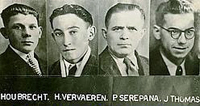 and in Liège left-wing politicians threatened to form a provisional government in Wallonia that would declare Walloon independence. The government held an emergency meeting and agreed that they needed to prevent the situation from deteriorating and turning into a civil war. They saw only one way out: Leopold had to abdicate in favour of his son Baudouin. On 31 August Leopold received the Prime Minister at Laeken and was persuaded to agree, although the following night he told his ministers that he had changed his mind and would not abdicate. Only when the Prime Minister threatened to resign and the other ministers declared their solidarity with the Prime Minister did Leopold accept the inevitable. In the morning of 1 August 1950, he signed over his royal prerogatives to his eldest son Baudouin, who received the title of Royal Prince. On 11 August Baudouin would swear his oath in a joint session of Parliament. As Baudouin was too young to rule, it was agreed that his uncle Charles would continue his duties as a regent until Baudouin came of age. On 16 July 1951 Leopold would finally sign his abdication papers, and a day later Baudouin was installed as the fifth King of the Belgians. Leopold lived in retirement with Lilian, first at Laeken and then (after Baudouin's marriage) at Argenteuil, until his death in 1983.
and in Liège left-wing politicians threatened to form a provisional government in Wallonia that would declare Walloon independence. The government held an emergency meeting and agreed that they needed to prevent the situation from deteriorating and turning into a civil war. They saw only one way out: Leopold had to abdicate in favour of his son Baudouin. On 31 August Leopold received the Prime Minister at Laeken and was persuaded to agree, although the following night he told his ministers that he had changed his mind and would not abdicate. Only when the Prime Minister threatened to resign and the other ministers declared their solidarity with the Prime Minister did Leopold accept the inevitable. In the morning of 1 August 1950, he signed over his royal prerogatives to his eldest son Baudouin, who received the title of Royal Prince. On 11 August Baudouin would swear his oath in a joint session of Parliament. As Baudouin was too young to rule, it was agreed that his uncle Charles would continue his duties as a regent until Baudouin came of age. On 16 July 1951 Leopold would finally sign his abdication papers, and a day later Baudouin was installed as the fifth King of the Belgians. Leopold lived in retirement with Lilian, first at Laeken and then (after Baudouin's marriage) at Argenteuil, until his death in 1983.
Acknowledgment
With special thanks to The Royal Forums member Johann for her help with this article.
Bibliography
Aronson, Theo, The Coburgs of Belgium, London 1969
Berghe, Jan van den, Kroniek van 100 jaar Europese koningshuizen, Ghent 1999
Gerard-Libois, Jules and Jose Gotovitch, Leopold III. De l´an 40 a l´effacement, Brussels 1991
Goethem, Herman and Jan Velaers, Leopold III. De koning, het land, de oorlog, Tielt 1994
Kerkevoorde, Mia, Vorsten & vorstinnen, Tielt 1994
Keyes, Roger, Echec au Roi: Leopold III 1940-1945, Paris 1985
Leopold III, Kroongetuige. Over de grote gebeurtenissen tijdens mijn koningsschap, Tielt 2001
Page, John, The Belgian Royal Question, London 1959
Raskin, Evrard, Prinses Lilian, de vrouw die Leopold III ten val bracht, Antwerp 1998
Remy, Le 18e Jour La Tragédie De Leopold III Roi Des Belges, Paris 1976
Senelle, Robert et al, Handboek voor de Koning, Tielt 2004
Wijngaert, Mark et al, Een Koningsdrama. De biografie van Leopold III, Antwerp 2001
Photo Credits
Page 1: Leopold III: (c) RDA (public domain under Dutch copyright laws)
Page 1: Spaak and Pierlot: source: Government Archives; public domain
Page 1: Josephine-Charlotte, Baudouin, Queen Elizabeth: public domain under Dutch copyright laws
Page 2: Lilian: (c) RDA (in public domain under Dutch copyright laws)
Page 2: Leopold and Lilian: public domain
Page 2: Posters and headlines: public domain
Page 2: The demonstrations: free domain
Page 2: The four victims of the demonstrations: public domain (under Dutch Copyright Laws about newspapers and magazines)
